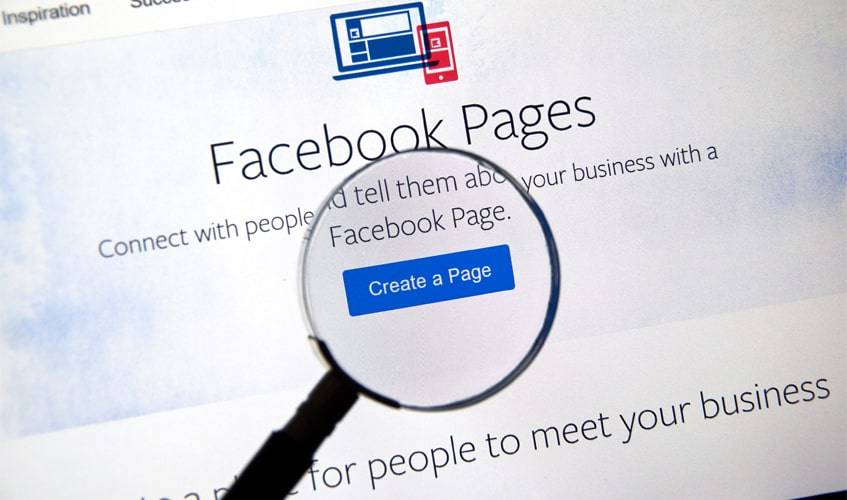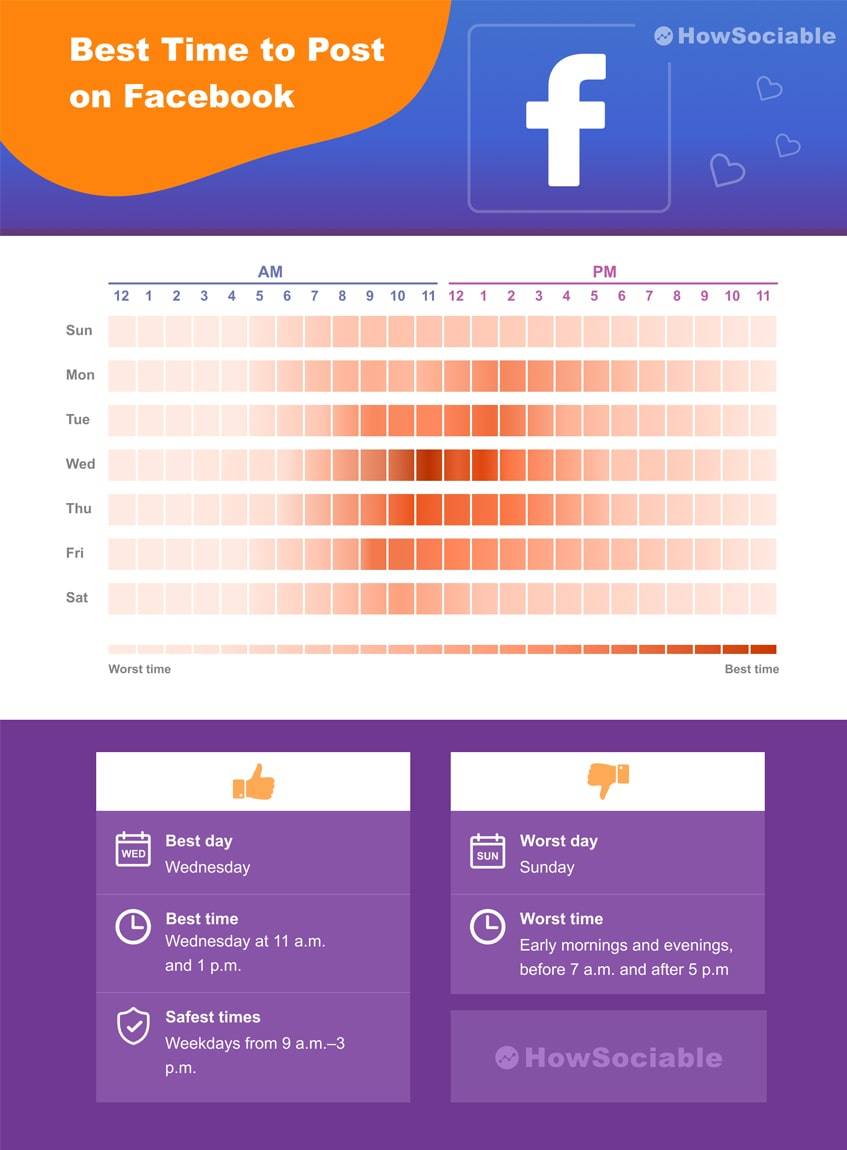Facebook is the world’s largest social network, reaching billions of people daily. The wide use has made it ideal for businesses looking to endorse their products and services. And due to the site’s splendid ability to put users into groups, it couldn’t be better for targeted marketing. Yet there are dozens of tricks to the trade, giving companies the chance to create effective marketing campaigns that certainly can grab a reader’s attention.
Read the guide below to discover how to use Facebook for business, and capture more customers with better techniques.
Table of Contents
Facebook Terminology
Facebook has dozens of features which can benefit both businesses and clients. Users have the ability to share, like, or comment on media instantly. The guide below describes some of the main terms found on the website.
| Terms | Description |
|---|---|
| Profile | Create a custom page for either a business or person that shows basic info about the author. Can be used to market or befriend other users. |
| Cover Photo | Upload a large photo that will be placed in the background of a profile. This feature is public at all times and can be viewed by anyone. |
| Timeline | Read through a fresh news feed that drips media and activity from other users or pages. Every account on the network has a timeline. |
| Messages | Send private messages to any member on the social network. The messages feature works similar to email. |
| Chat | Send and receive live chat messages with friends or other pages. Chat can also be used to make calls. |
| Group | Join groups with friends or public users interested in similar content. The community-driven pages allow members to chat, organize, and start a convo on the group timeline. |
| Follow | Follow the public activity of other accounts or pages to see new posts and updates. The content from followed accounts appears in the timeline. |
| Admin | Manage a page or group by becoming the admin. |
| Event | Find local or foreign events going on in cities or venues. Groups show friends or other liked pages that will be attending. Users can also create events and send invites to other profiles. |
Make a Facebook Business Page
Creating a Facebook page for a business is the first step to getting things rolling. The profiles of companies are always public and can be liked by anyone. Those who like the page are then informed of any new posts, updates, or promotions.
Forming a business page requires that a user has a personal profile. Once this is done, a company owner can follow the on-screen instructions to create the page. Below is a list of features common to such a page.
| Terms | Description |
|---|---|
| Home | The home page is the first page fans meet. This page shows live updates, new events, and fresh posts. |
| Posts | Live status updates show all of the recent activity of an account. |
| Photos | A photo section shows what photos the company and fans have posted. |
| About | The essential part of a new page is communicating to readers what a company does, and how to reach it. The about section should include contact info, a website link, and hours of operation. |
| Events | An event section promotes the upcoming activities a business may host. This feature allows fans to mark whether they plan to attend or not. |
| Community | A community section gives fans and clients the chance to interact and place photos and comments to the page. This can be useful for insight and many other factors. |
| Shop | The inventory that a business offers can be displayed through a shop feature. Fans can also buy goods directly from the shop section. |
| Info and Ads | A company can display any of the ads that they are currently running. This can make the company seem more credible. |
| Offers | Promoting goods through the offers page can help a business increase sales. Discounts and promotions through Facebook will drive traffic to the page. |
| Reviews | A review section may be added to give clients a chance to voice their thoughts. The feedback from reviews can help market goods and services to other clients. |
| Services | A section explaining the services a company offered can be added to the profile. |
How to Use Facebook for Business in 2024
Using Facebook for business marketing can be a splendid thing – if done right. But it’s not as easy as a snap of the fingers. Many corporations use the site wrongly and miss out on a big opportunity. Take a look at the steps below to learn more about how to make the most of the social network.
1. Create a Business Page
The first step to creating a business page is to log into Facebook. Pages may not be created directly and must be done through a personal profile. From here a user simply must click on the ‘Create’ section while on the home screen. Once clicking ‘Create’, one must simply choose the ‘Page’ option.

The ‘Page’ option then presents two choices. Either to form a business or a community figure page. Creating one for business requires the name, address, and category of the company. Info that is put in will then become public.
Once the basic info is put in, a profile picture may be added. After this step, a cover photo may also be added. A new page will then have many blank spaces which can be filled. The features such as about, services, photos, and many more should all be filled out. After completing many of the features, the creator can invite friends to like the page.
2. Add a Call-to-Action Button for Visitors
Adding a call-to-action button is a simple way to engage fans more. The button gets pasted under the right corner of the cover photo.
The Available Buttons Which May Be Added Are as Follows:
- Book
- Contact
- Learn more about the business
- Shop
- Download app or play game
All of the buttons then directly link a user to the action. This is a speedy way of moving fans from the FB page to a website, or appointment.
3. Include SEO Tactics to Optimize a Page for Search Engines
It is very important to optimize a FB page for search engines. The earlier a page shows up, the more likely it is to be chosen by the consumer. And once found, the page must be interesting enough to hold fans’ attention. Thus, optimizing a page is simply a must.

The first step to optimizing a page is identifying keywords. Apt use of keywords will help a page show up earlier in search results. The words should tell readers what a company is about in the simplest of terms. These then need to be placed throughout the text.
The second step is creating a memorable username. The username will then appear in the URL text, which readers can see when viewing links. A catchy and relevant username will help the page show up earlier in results. At first, a random username is assigned, but after 25 likes it may be changed.
4. Add A Facebook Ad Account
Once optimization is complete, a Facebook Ad account may be added. This can be done in the FB Business Manager dashboard. Such an account gives a company the chance to offer their services through fresh ads.
It is easy to set up an Ad Account from the Business Manager dashboard. Once this is completed, a user can enter the account ID, and purchase new advertisements. Ad accounts can be managed by multiple users, who create new content for a company.
5. Avoid Pushy Sales Tactics
Pushing products and services too much can result in a negative backlash from fans. Facebook’s main purpose is to be a social network. Thus, users are not looking to purchase from the site directly.
A common mistake that companies make is repetitively pushing products. Fans may become annoyed by too frequent of posts which push the same product. An effective way to market is to encourage chat on certain subjects. By getting people involved, the post becomes far more effective. This can be done by sharing daily updates or featuring a new follower in a post.
6. Establish a Target Audience
Before starting campaigns, it is best to get a clear idea of who the target market is. By identifying the market, it becomes easier to find people who are most likely to take an interest in a page.

Once a target market has been established, it can be easier to attract members of that market. Facebook’s data tools make it easy to promote to certain groups, locations, genders, or demographics. By narrowing down whom to target, a company may be more successful with their campaigns.
7. Interact with the Target Market Through Facebook Groups
The ability to engage with groups online can provide great insight into an industry. By getting involved with interest groups, a business can attract many new followers and gain useful data.
Groups can be created to encourage discussions about certain issues. From, here interactions can occur to gain honest feedback about the industry. Yet groups also present a company with the chance to become a Facebook authority in a field. This can be done by offering helpful advice and answering questions. After providing enough helpful info, a business can then become a respected member. At this point, users may look to the company for valid advice.
8. Schedule Posts for the Future with Publishing Tools
A company may use Facebook’s Publishing Tools and other social media tools to schedule posts for the future. The posts will then be shared at the select time and day that is chosen. Publishing Tools also gives users the chance to create content directly. Ads, videos, offers, and more can all be tailored with the tools.
After creating content, a company can choose when they wish to post. A regular schedule can maximize the success of campaigns. Many marketers share on specific days, such as Mondays and Fridays.
Though FB offers its own tools, there are also 3rd parties. A third-party site can take full control of the schedule, and post all of the content for a company.
9. Don’t: Post an Appropriate Amount
Companies which post too often risk scaring off clients. Facebook is meant for socializing and interacting with others. So when a company posts too much; users may feel overwhelmed. As a result, they may even unfollow a page.
An effective posting schedule can be a couple of times per week. However, a few times per day can be too much. Posting quality content less frequently can truly yield better results.
10. Produce Videos for Facebook
Posting videos is an easy way to grab the attention of fans. They require little contact from users, yet still, share-worthy info. Videos can promote new goods, or simply advertise a service.
With live videos, a business may also interact with followers. This opportunity can be used to answer questions or discuss future events.

11. React to Messages
The instant messenger feature can be used as a support center. Users can contact a business directly with either simple questions or comments. However, a company is expected to respond quickly. A rapid answer can show that customer service is taken seriously. Yet a slow reply can possibly cause trouble.
After answering enough inquiries, the page will be assigned an expected response time. This tells viewers the expected wait period until they are answered.
12. Aim to Increase Exposure
The most common issue a company may face is fans not seeing posted content. The material which is posted may never be seen by the large majority of the followers. This may hurt the business over a long period of time. However, Facebook acknowledges this phenomenon. The social network claims two main reasons why this happens.
The first reason is that relevant material is promoted over organic content. Thus, users are more likely to see text which is similar to their past likes and interests. The second is that news feeds often become overcrowded. Thus, a user may never see a post as dozens of others have been shared more recently.
Here Is a Brief Guide for Increasing the Exposure of Posts:
- Post promotional matter with a genuine story, not just pushy sales tactics.
- Grab the attention of fans with intriguing videos.
- Analyze what type of text is most well-liked with the Insights feature.
However, just posting great content is the most important aspect of increasing exposure.
13. Promote Contests and Giveaways
A simple way to encourage involvement is to offer Facebook giveaways. Fans that believe they can win a reward are likely to help endorse a page. Such people regularly check a page to look for giveaways and may inspire other friends to do the same.

The same applies to contests. If a business hosts a contest, a user may post material of their own to the page. This can help endorse goods and services that will be seen by many. Further, users may invite friends to comment or like media from a page to help win a contest.
14. Do: Post at Opportune Times
Posting content at strategic times of the day can be an effective strategy for increasing awareness. Many businesses choose to post media in the morning or evening. These times can be effective as it is likely that users are on Facebook at that hour. Thus, more users may be exposed to the subjects which have been posted.

Yet, other companies may choose to post in the afternoon. This may give a post enough time to gain fame so that it will rank higher later in the day. However, the best time to post relies on the habits of the target market. Thus, the ideal time to share differs based on each market.
15. Do: Analyze Facebook Insights and Tracking URLs to Monitor Page Performance
A helpful way to monitor the success of a page is to use the Insights feature offered to businesses. The Insights option can help a corporation see which posts are a hit, and which are a flop.
Also, tracking URLs can be used to see which posts are fetching traffic. These URLs can help marketers know what links and media were the most popular. Thus, collecting information from insights and URLs can be a simple way for a company to determine what fans like.
16. Pay for Promotions to Reach a Larger Audience
With proper marketing strategies, a business can naturally reach many of its targeted fans. However, it can also purchase small plans to augment that reach.
The most basic paid method is paying for a post-boost. This method increases the likeliness of a new subject to show up in a fans news feed. When choosing this method, an owner can select what genders, locations, and ages should be shown the material.

The second and more complex option is paying for a promoted post. A promoted post does everything that a post-boost does, and much more. Businesses can choose to include and exclude audiences, and place the matter in the FB/Insta stories. This type of promotion can reach a far wider audience, which is more specific.
Additional Tips For Your Facebook Ads
Facebook Ads are only as good as the quality of content they support. Creative campaigns and posts can ensure that money is not wasted on paid ads. Below are some tips to make the most of the paid advertisements.
Place Important Info First
Placing the most important information first is an easy way to show readers what the ad is about. If the essential info is too deep in a post, readers may never even know the main point.
Target Specific Markets
Targeting a specific audience is the key to reaching more of the right people. Ads that target a very wide audience are likely to be useless, as the wrong people may be the ones to see the post.
FAQ Section
How Can a Business Make the Most of Facebook?
Regularly posting updates, and being easy to reach is the best way to use Facebook for small business. When a company continues to post, it continues to engage its fans. The fans can then see new products or services. These products may stay fresh in their minds. This process can also help grow brand awareness.
Further, it is important for a company to be easy to reach on Facebook. A fast response can prove that the company is legitimate, and cares about the concerns of its clients.
How Can Facebook be Used to Promote Business?
Though there are many ways to promote a business, some are better than others. Five of the top methods are listed below.
| Method | Description |
|---|---|
| Create a Quality Page | Create a great page with a helpful about, services, and contact section |
| Post Photos | Post relevant and interesting photos to grab the attention of fans |
| Offer Promotions | Offer promotions for new products or services |
| Provide Rapid Responses | Respond to clients with a need ASAP to keep them happy |
| Engage With Fans | Like, share, and endorse content by fans to encourage involvement |
Can Facebook Make a Business More Successful?
Facebook can be one of the best networks a business can use to promote itself. Companies can easily build brand awareness when using the site. They can post just a few times a week, and reach fresh faces like never before.
Further, the site is an easy way for a company to chat with clients experiencing problems. The instant messenger feature can be used to provide an immediate response. Yet, the most important facet is the opportunity to search for trends. A company can learn from insights and other metrics to see how industry changes and evolves.
Are Hashtags Worth Using?
Using hashtags can be an effective method to attract new fans. Businesses have two options when using hashtags. The first is to use an existing tag. This will attract users to any page that contains the tag.
The second option is to create a unique hashtag. A unique tag can become a cool trend, encouraging others also to post the tag. Unique tags can then become viral, and attract many new fans.
The Final Word
In today’s modern times, it is essential for a business to use Facebook. The social network is built for sharing, which takes away a lot of the marketing for a new startup. With the network, a company can choose to support content, engage with fans, or gain insights.
However, by not choosing to use FB, a startup may struggle. Fans may doubt the authenticity of a company if it is not on the site. Ultimately, using Facebook for business is a must in 2024.
Does your company use Facebook, or does it prefer a different social network? Tell us about your experience with these platforms and how you decided to start using them for business.

Comments